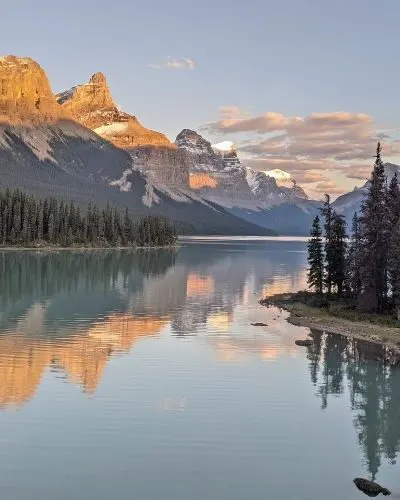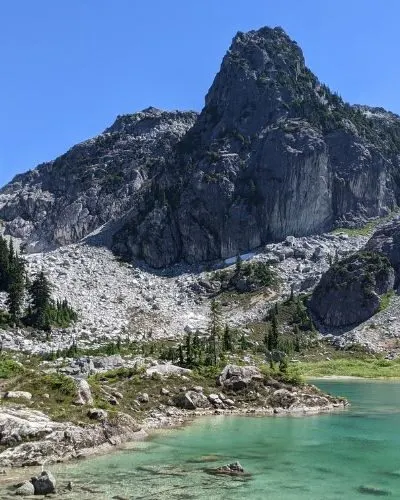As the largest province in Canada, Quebec hosts a wide array of wilderness from mountainous plateaus, boreal forest to rugged coastal cliffs and lowland plains.
Unsurprisingly then, there is a large network of national, provincial and regional parks that protect and share these landscapes.
Some of these parks are more well known than others, notably Mont Tremblant or the Saguenay Fjord.
There are, however, plenty more than don’t get mentioned nearly as often.
Here are five of those such parks, all of which absolutely deserve more attention.
Thank you to Quebec Maritime and Outaouais Tourism for assisting our visit to these Quebec parks.
The parks in this post are located on the traditional territories of the Omàmìwininìwag, Anishinabewaki, Haudenosaunee, Innu, Wabanaki, Mi’gmaq and Wolastoqiyik people.
Last updated March 2023.
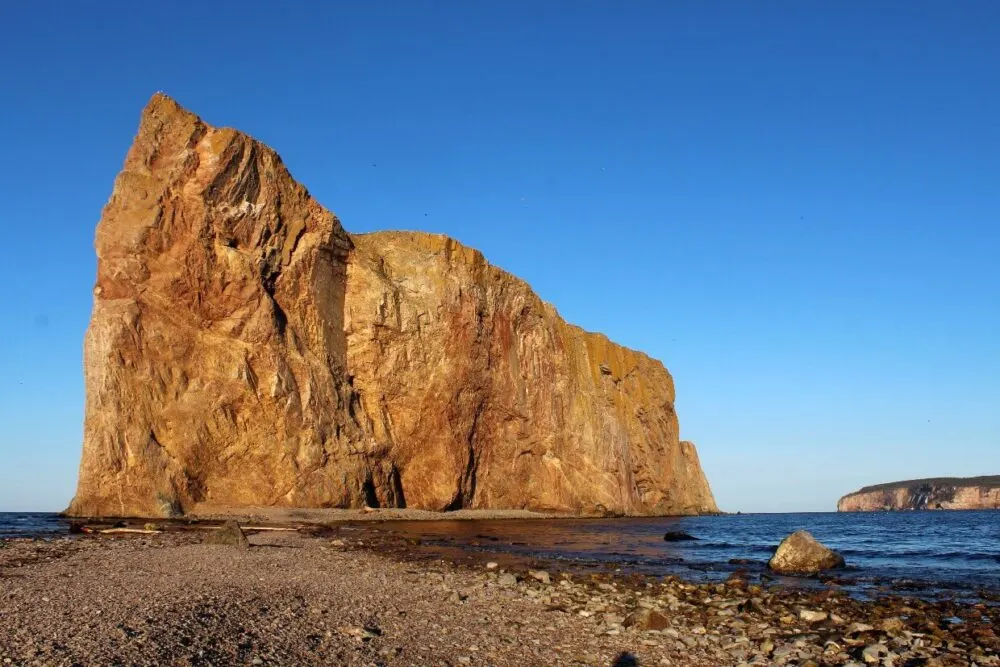
Backcountry necessities
- Always bring the 10 Essentials
- Know how to stay safe in the backcountry
- Remember to Leave No Trace to help keep the wilderness wild
- Understand how to avoid negative bear encounters
- Check out our packing guide with gear recommendations
- Sign up to our newsletter for free camping and hiking checklists
Parc national de la Gaspésie
The Gaspésie isn’t all about the coast. The spine of this jutting peninsula forms part of the Appalachian mountain range.
Gaspésie National Park protects a core area of peaks and rivers, inviting visitors to explore from valley bottom all the way into the alpine.
It’s a landscape that provides a home to some of Quebec’s rarest and most endangered wildlife. This is a side to the Gaspésie that so many would not expect.
Gaspésie’s barren, plateau topped mountains are unique and endlessly scenic to hike. They are also the home to the incredibly endangered woodland caribou, which you may be lucky enough to spot when exploring Gaspésie National Park.
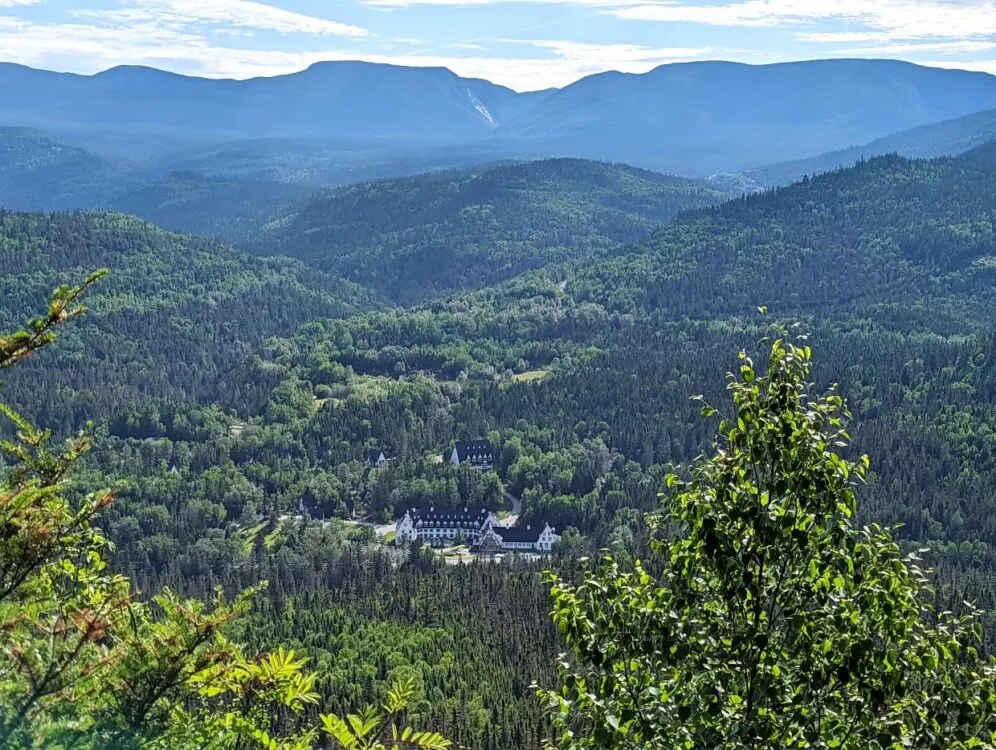
Top things to do in Parc national de la Gaspésie
Without a doubt, the number one summer activity in Gaspésie National Park has to be hiking.
Gaspésie’s barren, plateau topped mountains are unique and endlessly scenic to hike. They are also the home to the incredibly endangered woodland caribou, which you may be lucky enough to spot when exploring Gaspésie National Park!
In addition to plenty of day hikes, the International Appalachian Trail runs through the park and lends itself to some fantastic multi-day hiking.
There are a number of basic huts located close to trails for overnight stays, plus bus shuttles available for both baggage and passengers.
It’s also possible to paddle, fish, watch wildlife, camp, ice climb, cross country ski, snowshoe, backcountry ski in this Quebec park.
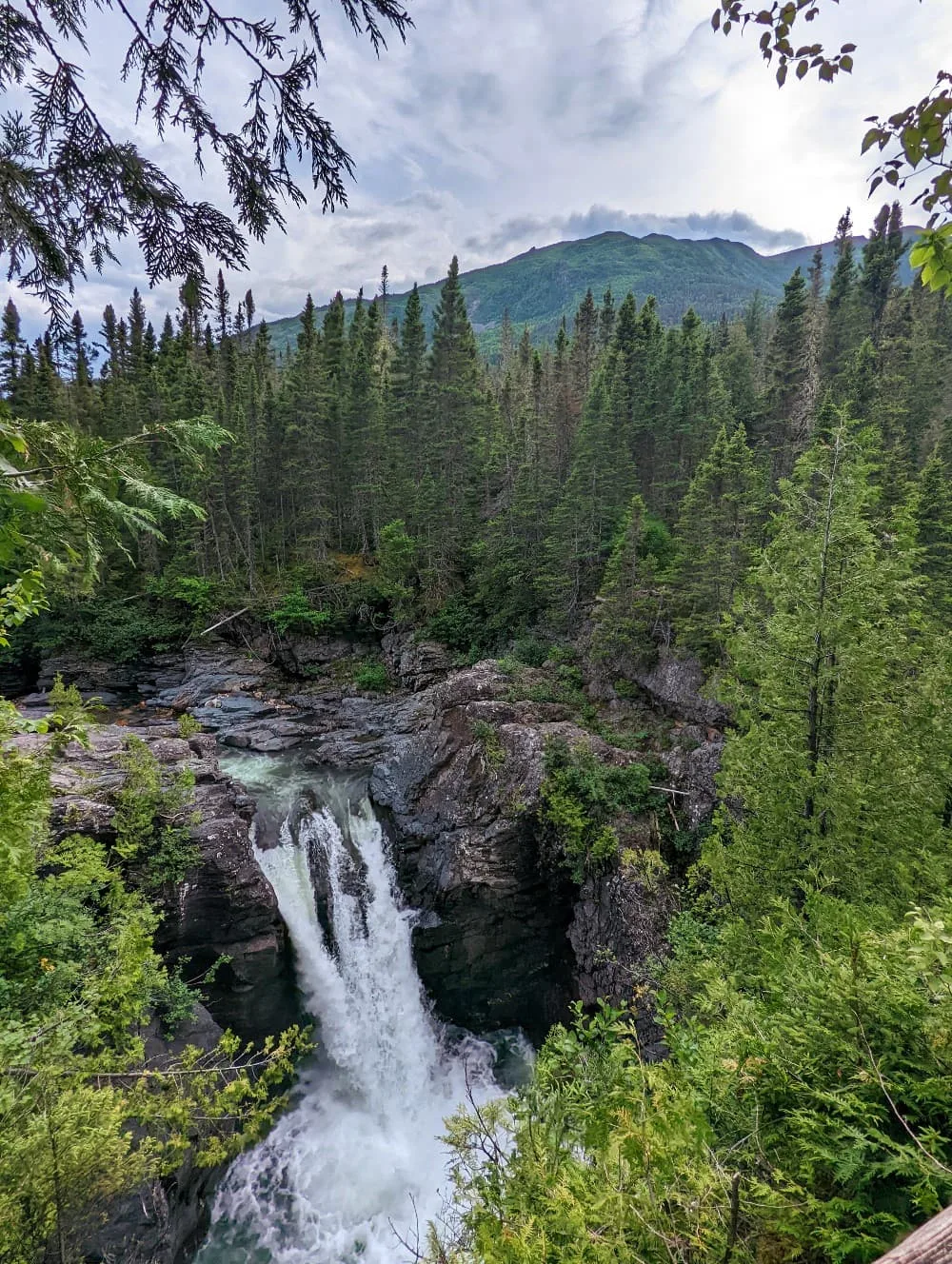
Essential details
Directions: This Quebec park is found to the northern centre of the Gaspé Peninsula. It is accessible via Highway 299 to the south and north
Park fees: Standard Quebec National Park fees apply in Parc National de la Gaspésie – $8.60 per day, per adult. Children 17 and under go free

Parc National du Lac Témiscouata
Lac Témiscouata showcases a welcoming blend of woods and water, centred around the moody namesake lake. It may only be an hour or less from Highway 1, but this park feels like a world away.
Bordered by the lake on two sides and with limited entry points, Témiscouata Park is surprisingly isolated for a place so close to civilisation.
Naturally, Témiscouata offers fantastic paddling opportunities on both the main lake and also on Petit Touladi and Grand Touladi lakes.
If you don’t have your own boat, kayak and canoe rentals are easy to organise within the park.
But paddling is only part of the story of Lac Témiscouata. Whether you like to hike, cycle, fish or just explore nature, there’s something to suit you here.
For those who want to learn more about the geology and history of the area, Lac Témiscouata offers an extensive daily program of activities and immersive experiences (suitable for adults too).
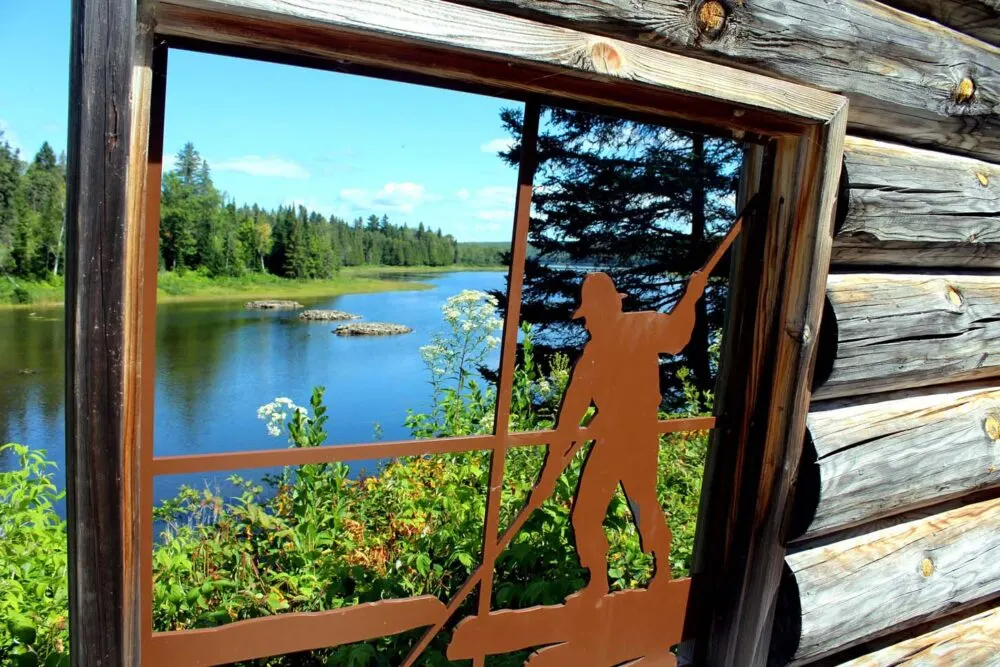
Top things to do in Parc National du Lac Témiscouata
For cyclists visiting the park, Témiscouata has put aside several premium waterfront camping spots.
Located a couple of kilometres along the shore from the Anse-à-William campground, these cyclist campsites are extremely private and have a fabulous sunset view. For paddlers, there are also canoe accessible only campsites on Grand lac Touladi.
For something a little different, it is also possible to sign up for a Rabaska experience, paddling a traditional birchbark canoe.
There are other opportunities to learn about First Nation culture in the park via sessions led by the resident archaeologists.
For hikers, there are more than a dozen signed trails, including one that showcases panoramic views across Témiscouata Lake from above (Montagne-du-Fourneau).

Essential details:
Directions: Lac Témiscouata borders Highway 1 (Highway 85) in the Bas Saint Laurent region of Quebec. If driving, the park is accessible via a vehicle ferry in Notre-Dame-du-Lac or highways 232 and 295
Park fees: Standard Quebec National Park fees apply in Parc National du Lac Témiscouata – $8.60 per day, per adult. Children 17 and under go fre

Forillon National Park
A park with a real end of the world feel, Forillon National Park occupies the tip of Quebec’s wild and windy Gaspé Peninsula.
Forillon National Park is located in a place that isn’t really on the way to anywhere. To visit Forillon, it’s not a matter of just driving past, it has to be the destination.
For this reason, Forillon remains a quietly impressive place, drawing dedicated visitors wanting to explore rugged coastal scenery and peaceful interior forests. It’s a real off the beaten path gem, especially for those who love wildlife.
Never have I seen so many wild animals in such such a short time at any of Canada’s National Parks. One particular day, we saw one moose, six porcupines, eight black bears (including cubs) and a lynx.
One of the most popular hikes (Cap-Gaspé), goes all the way to Land’s End where the rock tumbles into the often frigid St Lawrence River. Forillon is divided into a couple of different sections (or secteurs), all with camping and other recreation opportunities.
We spent most of our time in the south area, hiking the trails along the ocean, learning about the historical significance of the area and observing the local wildlife.
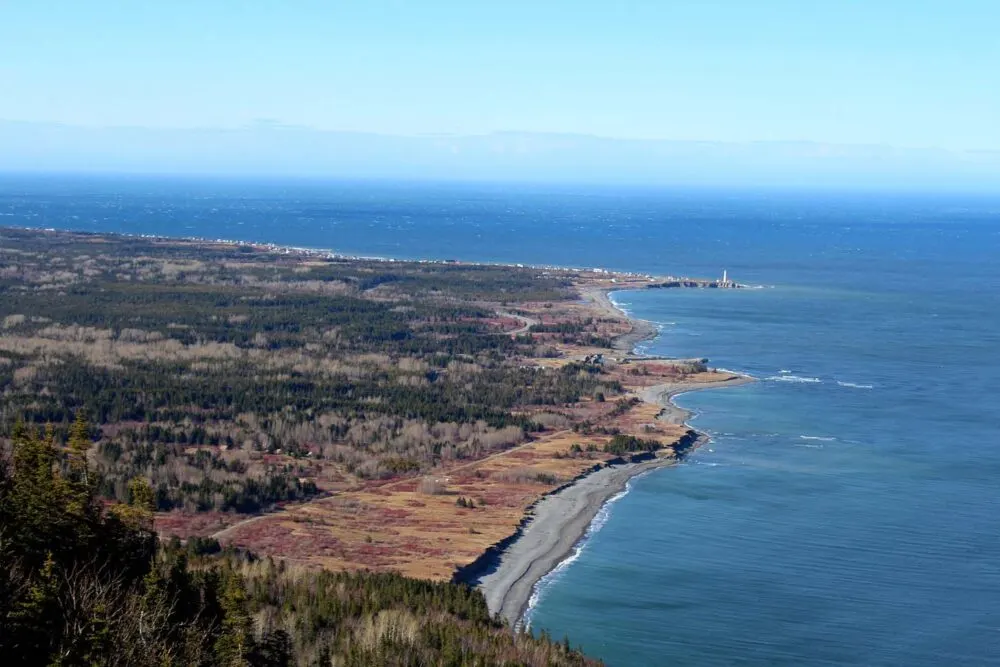
Top things to do in Forillon National Park
Alongside the regular National Park acivities (hiking, camping et al), there are a few more unusual activities in Forillon that you may not expect. One of these is whale watching.
There are regular departures from the Grande-Grave (South Area) harbour in summer, offering the chance to see white-sided dolphins, harbour porpoises and humpback whales.
If that isn’t quite immersive enough for you, it is also possible to go scuba diving in the cold yet abundant waters of the St Lawrence River.
It is also possible to kite surf, fish and paddle in this underrated Quebec park.

Essentials:
Directions: Forillon National Park is situated at the very end of the Gaspé Peninsula, just under 700km northeast from Quebec City
Park fees: Forillon is a National Park of Canada and standard Parks Canada admission fees apply from June 25 to September 3. In shoulder season (early June, late September), lower fees are charged.
Read more: 10 Fast and Fun Hikes on the Gaspé Peninsula
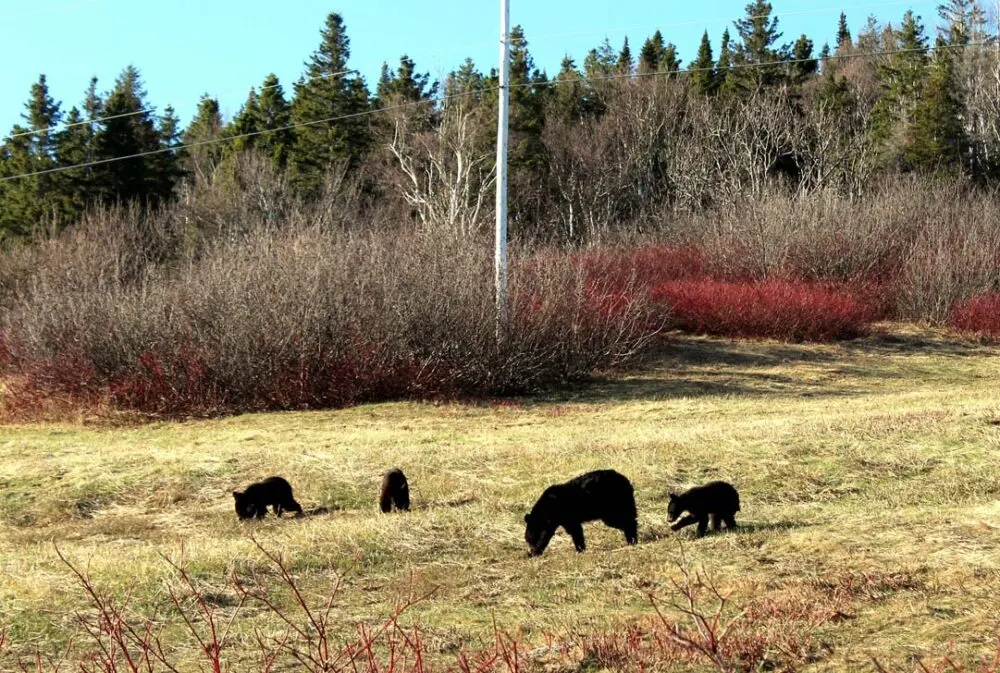
Parc national de l’Île-Bonaventure-et-du-Rocher-Percé
An impressively long name for an impressive park, Parc national de l’Île-Bonaventure-et-du-Rocher-Percé consists of two natural wonders.
Bonaventure Island is one of the world’s largest bird sanctuaries, with over 280,000 birds calling this land home.
The island also has an interesting (and also sad) history, having been used as a seasonal fishing port and later colonised by Irish settlers. Prior to the park’s creation, all of the local residents were forcibly removed in the early 1970’s by the Quebec government.
A little closer to shore, Percé Rock is a huge striking formation jutting out from the St Lawrence River. It’s a pretty dramatic sight no matter what angle you see it from!
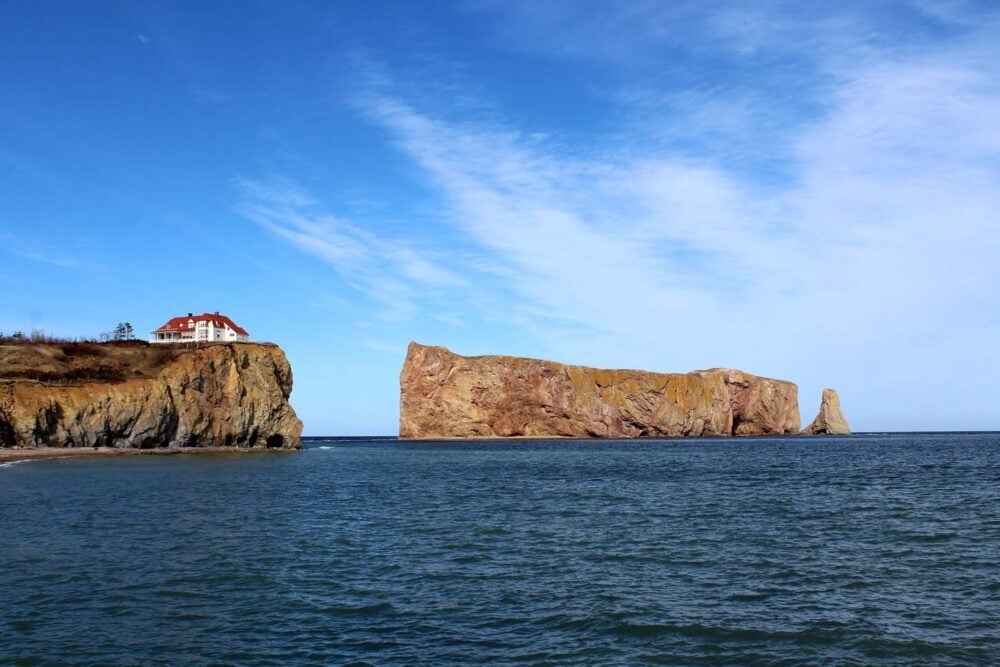
Top things to do in Parc national de l’Île-Bonaventure-et-du-Rocher-Percé
A boat trip is the easiest way to get a close up look at both Percé Rock and Bonaventure Island. Several cruise companies offer tours, both with the additional option of whale watching in the surrounding area.
One way to get an overview of the whole park is to head to Percé’s GeoParc. Not only can you learn more about the remarkable geology of the area, but hiking the trails behind the campground lead to amazing panoramas of the bay.
It is also possible to kayak and dive in this Quebec park.
Essential details
Directions: Percé Rock can be found just off the coast of Percé, on the Gaspé Peninsula’s southeastern shore. Bonaventure Island is 3.5km from this coastline
Park fees: Standard Quebec National Park fees apply in Parc national de l’Île-Bonaventure-et-du-Rocher-Percé – $8.60 per day, per adult. Children 17 and under go free

Gatineau Park
It may not yet have national or provincial park status in name, but Gatineau Park has a surprising amount of variety and size of wilderness.
This is especially true considering that the park is only a fifteen-minute drive from the cities of Ottawa and Gatineau!
For this reason, Gatineau Park is the perfect place for a quick getaway from the city or a short detour on a longer Quebec road trip.
As well as being only a short drive away from Canada’s capital city, Gatineau Park’s diverse habitats are home to the highest number of rare or endangered species of any park in Quebec (118).

Top things to do in Gatineau Park:
La Pêche is the largest lake in Gatineau Park and has much to offer for both day-trippers and those looking for a taste of wilderness.
The long sandy beach has washrooms, change rooms, picnic tables and a lifeguard during the summer months.
There are also canoe and kayak rentals, which you can use to access one of the 32 wilderness campsites located at 12 locations around the lake.
We stayed at site 9B, only a 40-minute relaxed paddle from the beach. With neighbouring site 9A empty and no other campsites in sight, we spent the night listening to the resident loons and watching the stars (surprisingly bright so close to the city!)
Visitors to Gatineau Park can also explore hiking trails, climb, fish and zipline. In winter, the park welcomes snowshoers and cross country skiers.

Essential details
Directions: Gatineau Park is most easily accessed from Highway 5 between Ottawa and Wakefield. If you need supplies (or want a beer/ice-cream reward after a hike) head into the cute lakeside town of Wakefield
Park fees: Access is free year round but there is a summer parking fee of $9-12 at the beaches (mid-June to September 3rd) and the Mackenzie King Estate (mid-May to mid-October)
Read more: Finding Outdoor Adventure in the Gatineau Valley, Quebec

Other Quebec posts you may find helpful:
Ultimate Two Week Coastal Quebec Road Trip Itinerary
10 Fast and Fun Gaspé Peninsula Hiking Trails, Québec
Finding Outdoor Adventure in the Gatineau Valley, Quebec
Four Fun Ways to Go Whale Watching in Tadoussac, Quebec
Adventure in your inbox
Subscribe to our monthly email newsletter and receive a round-up of our latest outdoor adventures plus other exciting beyond the beaten path destinations
We never share your information with third parties and will protect it in accordance with our Privacy Policy
Check out these recently published posts:

One half of the Canadian/British couple behind Off Track Travel, Gemma is happiest when hiking on the trail or planning the next big travel adventure. JR and Gemma are currently based in the beautiful Okanagan Valley, British Columbia, Canada


